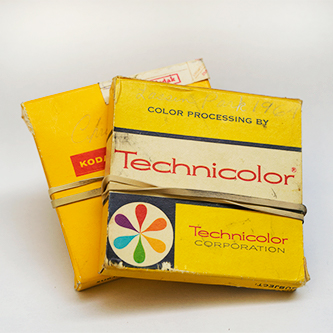


The story of film follows one central character and the company he started; George Eastman and the Eastman Kodak Company. Much like Henry Ford with the automobile, George Eastman didn’t invent the camera but he did invent a new form of photography that made it accessible to the masses. His 1888 invention of the Kodak camera presented the fundamental idea of roll film to the world and this same concept is what eventually brought us film video. With each release of a Kodak camera the world of photography became less and less about expensive chemicals, bulky equipment and years of training and more about an image making process that anyone could enjoy.
As Photography entered the world and began improving upon itself, motions pictures were soon to follow. The first film video camera was invented in 1890 and technological advancements were being made soon after. Although motion pictures captivated the world, it was an art form that was not accessible to the common person at all. It was almost 40 years before sound would be put to video and during most of that time everything was shot on 35mm film reels. Shooting, Developing, Editing and Showing a video was a gigantic undertaking with 35mm film but in 1923 George Eastman once again revolutionized the industry by introducing 16mm film with the Cine Kodak camera. This camera was only 7 pounds and about 8 inches square but because it had to be hand cranked the operator still needed a tripod to use it. About a decade later he released the 8mm format which was again an improvement in affordability and usability.
Through the 1940’s and 50’s 8mm cameras were making there way into the family home of many Americans. By this point in time the cost had lowered to the point where the average middle class american could afford a camera, some rolls of film and a projector to watch them on. Most videos were recorded at family events or special occasions. 8mm video became the standard for many decades until digital inevitably took hold as the predominant means for recording home video.